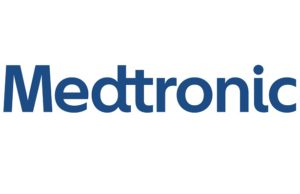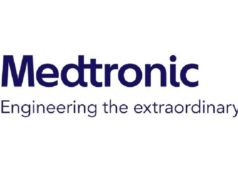 Medtronic has announced the US launch of the Control Workflow, an evidence-based approach for use with the SynchroMed II intrathecal drug delivery system (“Medtronic pain pump”) that helps physicians wean patients off oral opioids and treat chronic intractable pain. The Medtronic pain pump provides effective pain relief at a fraction of the oral dose with fewer side effects and has been shown to reduce or eliminate the use of oral opioids. Prior to the Control Workflow, a retrospective claims analysis (n=389) found that 51% of chronic non-malignant pain patients eliminated the use of oral opioids after one year on the pump.
Medtronic has announced the US launch of the Control Workflow, an evidence-based approach for use with the SynchroMed II intrathecal drug delivery system (“Medtronic pain pump”) that helps physicians wean patients off oral opioids and treat chronic intractable pain. The Medtronic pain pump provides effective pain relief at a fraction of the oral dose with fewer side effects and has been shown to reduce or eliminate the use of oral opioids. Prior to the Control Workflow, a retrospective claims analysis (n=389) found that 51% of chronic non-malignant pain patients eliminated the use of oral opioids after one year on the pump.
Given the current opioid epidemic and ongoing pain management crisis, there is a need for solutions that effectively address chronic pain. Many people use oral opioids to treat pain; however, there is limited evidence on the effectiveness and benefits of long-term oral opioid therapy. The Control Workflow in combination with the Medtronic pain pump encourages oral opioid elimination and can be used as an alternative to long-term oral opioid therapy for appropriate patients.
“The Control Workflow assists me in identifying appropriate patients who could benefit from targeted drug delivery using the Medtronic pain pump, which is especially important with the current opioid epidemic in the USA,” said John A Hatheway, owner and provider, Northwest Pain Care, Spokane, USA. “The workflow is especially helpful for patients who may be on high doses or cannot tolerate systemic opioids, or for those who are not finding pain relief with systemic opioid therapy. By placing the medication at the source of the pain, we can often provide better pain relief with fewer side effects at a fraction of the oral dose.”
The Control Workflow includes oral opioid weaning considerations that can be tailored to individual patients and assists physicians in identifying patients likely to have positive outcomes with the Medtronic pain pump. It supports oral opioid tapering and drug holidays, allowing for treatment with the lowest effective dose of intrathecal medication, which may improve pain relief compared to a combination of oral and intrathecal treatment. This evidence-based approach was developed by clinicians and provides comprehensive guidance on therapy initiation, catheter placement, and dosing that could impact successful outcomes with the goal of sustained pain relief and functional improvement.
“There is a significant unmet need in chronic pain and device-delivered options are underutilised for appropriate patients, so we continue to innovate to maximise the value of proven treatments,” said Charlie Covert, vice president and general manager of the Targeted Drug Delivery business, part of the Restorative Therapies Group at Medtronic. “We rolled out the Control Workflow to help simplify targeted drug delivery therapy, support oral opioid weaning, and offer more patients an effective alternative for pain relief. This is an important part of our commitment to help address the opioid epidemic and pain management crises. We will continue to partner with stakeholders to provide clinical guidance that helps physicians understand when to consider device-delivered treatments.”
Many patients take progressively higher doses of oral opioids without improvement in pain control, function, and quality of life. It is suspected the chronic use of oral opioids may treat end-of-dose withdrawal rather than underlying pain, and patients frequently report that their opioid doses merely “take the edge off” their pain.











